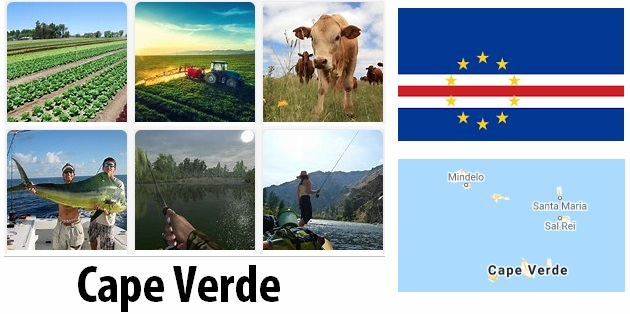
Link:https://opinion.huanqiu.com/article/48dCZH3fLit
Introduction
Cape Verde is a West African nation. Approximately 40–50 million years ago, during the Eocene epoch, the archipelago of modern-day Cape Verde emerged. Prior to European settlement, the Cape Verde Islands were uninhabited. They were discovered about 1456 by Genoese and Portuguese navigators. According to official Portuguese records, António de Noli, who was born in Genoa and later appointed governor of Cape Verde by King Afonso V., made the earliest discoveries. Other navigators credited with discoveries in the Cape Verde archipelago include Diogo Dias, Diogo Afonso, Venetian Alvise Cadamosto, and Diogo Gomes (who accompanied António de Noli on his voyage of discovery and claimed to have been the first to arrive on and name the island of Santiago)[1]. In 1462, Portuguese immigrants landed in Santiago and created the Ribeira Grande town. Today, it is known as Cidade Velha (Old City) to differentiate it from a town on a separate Cape Verdean island with the same name (Ribeira Grande on the island of Santo Anto). Ribeira Grande was the first European permanent colony in the tropics. Cape Verde has been a stable representative democracy and one of the most developed and democratic nations in Africa since the early 1990s. Lacking natural resources, its expanding economy is mostly based on services, with an increasing emphasis on tourism and international investment. It’s about 483,628 inhabitants (as of the 2021 Census) are largely of mixed African and European ancestry and predominantly Roman Catholic, a vestige of Portuguese sovereignty. A substantial diaspora group of Cape Verdeans exists around the globe, mainly in the United States and Portugal, far outnumbering the population of the islands. Cape Verde is an African Union member state.

The People and Culture
The vast majority of Cabo Verde's population is of mixed European and African ancestry and is frequently referred to as mestico or Crioulo. There is also an African minority comprised of the Fulani (Fulbe), Balante, and Mandyako. A small population of European origin includes people of Portuguese descent (particularly from the historical province of Algarve and the islands of the Azores) as well as those of Italian, French, and English descent[2]. There is also a sizeable population descended from Sephardic Jews who were expelled from the Iberian Peninsula during the Inquisition in the 15th and 16th centuries and were among the islands' earliest settlers, or from other groups of Jews, primarily merchants, who arrived in the 19th century from Morocco[1]. The culture of Cape Verde is comprised of both African and European influences. This is not the sum of two civilizations coexisting, but rather a new culture originating from a 15th-century trade. Cape Verdean social and cultural trends are distinctive. Typical forms of social connection and amusement include football games and religious activities. In Cape Verdean towns, the customary stroll around the praca (town square) to greet acquaintances is a common occurrence. The majority of the Cape Verdean diet consists of seafood and staples such as maize and rice. Throughout the majority of the year, potatoes, onions, tomatoes, manioc, cabbage, kale, and dry beans are available as vegetables. Bananas and papayas are accessible throughout the year, although mangoes and avocados are seasonal. Popular in Cape Verde is cachupa, a stew of maize (hominy), beans, and fish or meat cooked slowly. A popular starter is the pastel, a fried pastry shell filled with fish or meat[3].

Source: Africa.com https://www.africa.com/heres-what-you-need-to-know-about-cape-verde
The Economic Development
In appreciation of Cape Verde's remarkable economic growth and improvement in living circumstances despite a dearth of natural resources, other nations and international organizations often provide development assistance. Since 2007, the United Nations has classed it as a developing nation as opposed to a least developed nation. There are limited natural resources in Cape Verde. Only five of the ten major islands (Santiago, Santo Anto, So Nicolau, Fogo, and Brava) sustain considerable agricultural output, and more than ninety percent of the food eaten in Cape Verde is imported. Salt, pozzolana (volcanic rock used in cement manufacturing), and limestone are examples of mineral resources. Its few wineries producing wines in the Portuguese style have long concentrated on the home market, but have lately received worldwide recognition. [4]In the spring of 2010, varieties of wine excursions of Cape Verde’s varied microclimates were available. More than 70 percent of the country's gross domestic product is comprised of commerce, transportation, and public services, indicating a service-based economy. Despite the fact that approximately 35% of the population lives in rural regions, agriculture and fisheries only contribute roughly 9% of GDP. Light manufacturing accounts for the majority of the other industries. Fish and shellfish are abundant, although only a limited amount is exported. Mindelo, Praia, and Sal are home to cold storage and freezing facilities and seafood processing industries. Through remittances, expatriate Cape Verdeans contribute an estimated 20 percent of GDP to the home economy. Despite, its lack of natural resources and semi-desert terrain[3]. The country has the greatest living standards in the West Africa and it has drawn tens of thousands of immigrants of many countries to Cape Verde.
Agriculture
Cabo Verde's agriculture is constrained by the harsh and repeated droughts that plague the islands. The extreme circumstances have traditionally provided significant obstacles to agricultural endeavors, resulting in erratic crop production and occasional outbreaks of widespread hunger. During the centuries of Portuguese colonization, poor grazing methods for sheep and goats and little efforts toward reforestation and water conservation exacerbated this bad ecological situation. The postcolonial governments have made significant efforts to plant drought-resistant acacia trees and construct dikes, retaining dams, and terracing in order to reduce intense water erosion, improve water retention in the subsoil, and improve and expand the limited land available for subsistence and small-scale commercial agriculture. For local consumption, corn (maize), sugarcane, castor beans, broad beans, potatoes, and peanuts are cultivated (groundnuts). However, there is a considerable dependence on imported products, and food imports have long been an unavoidable need. Tuna and lobster are caught, despite the fact that Cabo Verde's fishing skills are underutilized. Fish is significant for both internal consumption and export.
The use of firewood as a fuel source has strained Cabo Verde's forest resources[3]. At the same time as the usage of wood fuel continued to rise in the late 20th century, the amount of wooded land on the islands increased due to government reforestation initiatives. At the start of the 21st century, about one-fifth of Cabo Verde was covered with trees[5].

Source : https://www.smber.com/Cape_Verde.html.
Références
[1] Cape Verde Gets New Name: 5 Things to Know About How Maps Change[OL] https://www.nationalgeographic.com/adventure/article/131212-maps-cabo-verde-cartography-science-cape-verde-africa.
[2] Cabo Verde - Cultural life | Britannica[OL] https://www.britannica.com/place/Cabo-Verde/Cultural-life#ref516606.
[3] Cabo Verde / Cape Verde - Economy[OL] https://www.globalsecurity.org/military/world/africa/cv-economy.htm .
[4] Development and importance of tourism for Cape Verde[OL] https://www.worlddata.info/africa/cape-verde/tourism.php.
[5] Cabo Verde | South African History Online[OL] https://www.sahistory.org.za/place/cabo-verde.